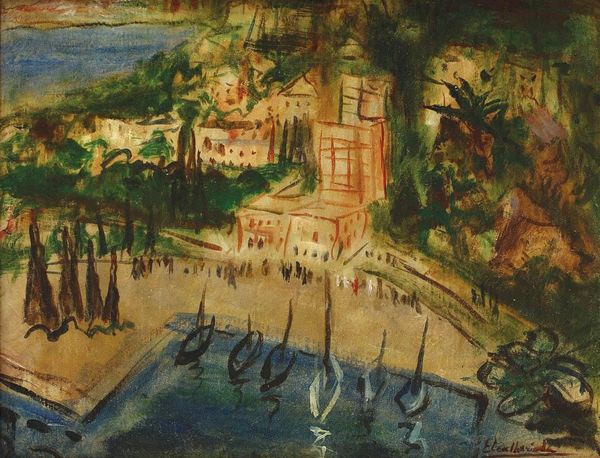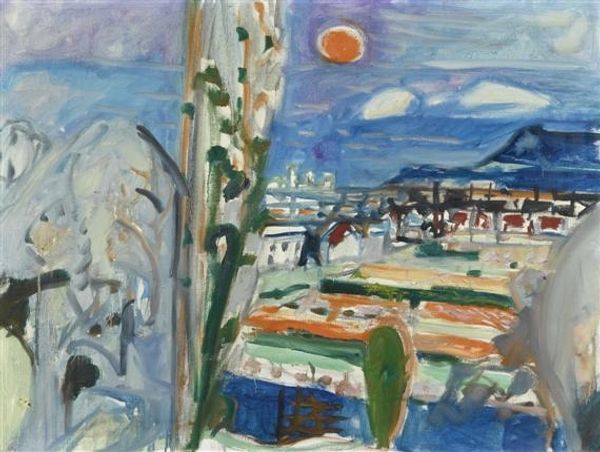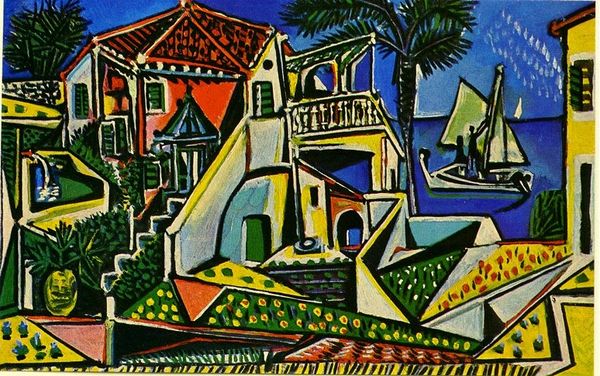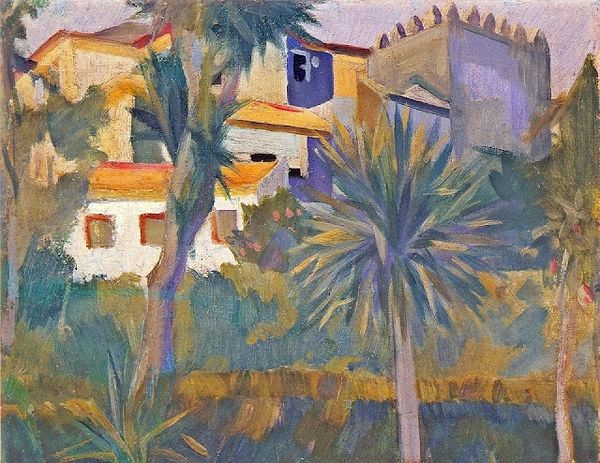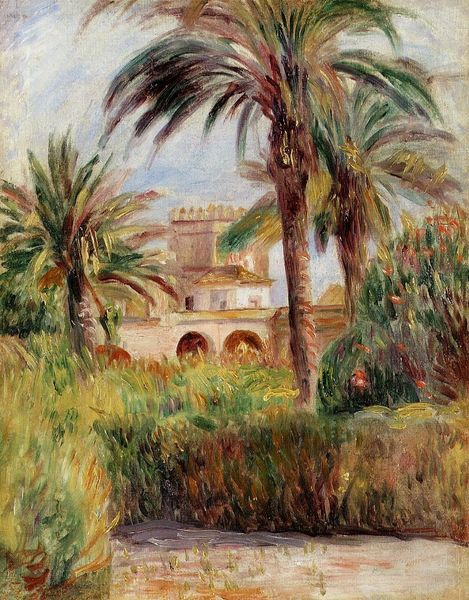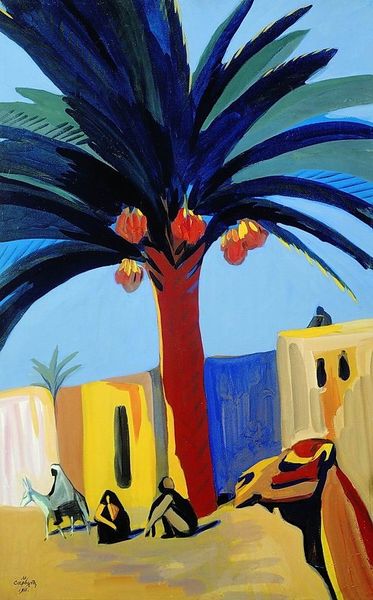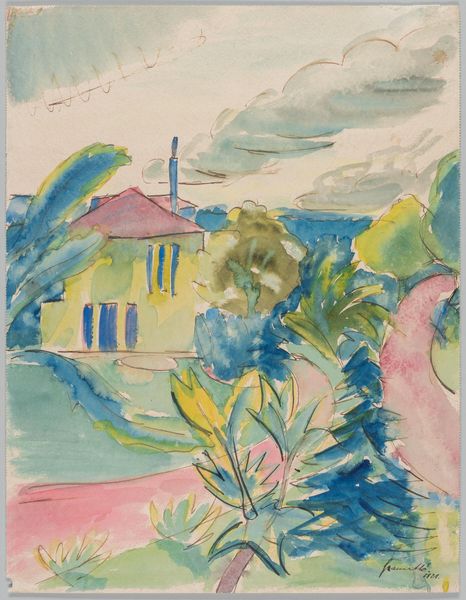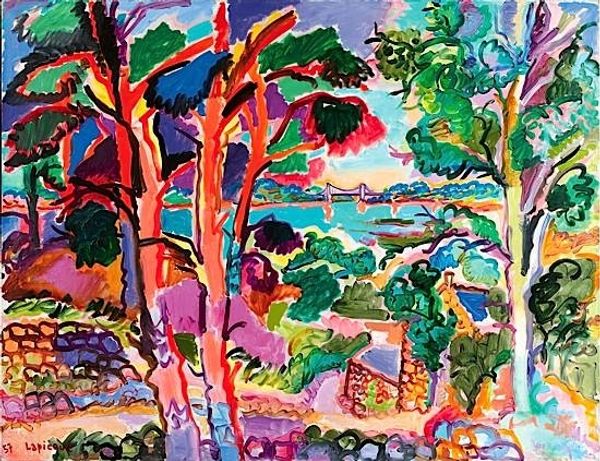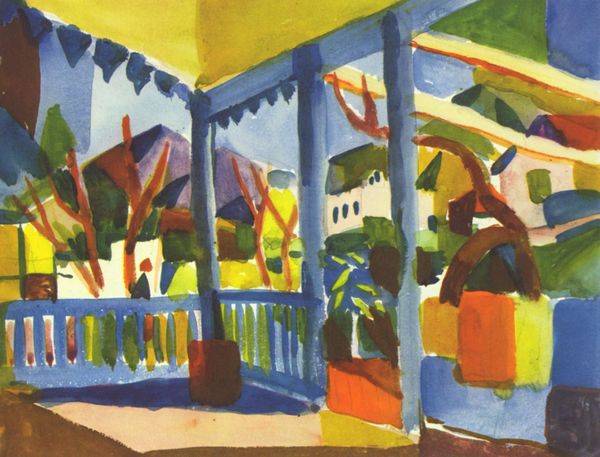
Copyright: Public domain
Curator: This is Lovis Corinth’s "Menton," an oil painting from 1913. Editor: My first thought is…vibrant! The yellow of that building juxtaposed with all the greens feels incredibly alive. It’s a rather dense composition though, isn't it? Curator: The density contributes to its evocation of the complexities within modern experiences. The layering suggests Corinth’s relationship to impressionism and even nascent expressionist impulses as a German painter operating pre-World War I. There’s this sense of being slightly overwhelmed. Editor: Absolutely. This piece was painted "en plein air," wasn't it? I wonder how that immediacy factored in, especially considering the politics of leisure for people living in that period. This is Menton; it’s on the French Riviera! We have this collision of nature and industry on display for tourists from all walks of life, for both national and international audiences, no? Curator: Exactly, we are not just seeing a landscape, but witnessing its historical production for the tourist gaze. The perspective—almost bird’s eye—further detaches the viewer, rendering the depicted space almost like a postcard but dirtier and harsher. Corinth challenges our assumed relationship with idealized vacation spaces. It prompts you to consider those social, economic, and even labor inequities at play. Editor: The palm trees contribute to the exoticized, orientalist fantasy too. How does that reflect German identity and the quest to establish Germany's own place in the Imperial competition to possess land and power through representations of landscape? The style almost echoes that fraught search for a post-national style...a place to belong. Curator: Yes, the post-Impressionist brushwork certainly emphasizes that anxiety surrounding cultural belonging, that constant searching and questioning through both his handling of oil and choice of subject. Corinth highlights the anxieties associated with modernity. Editor: And even in a setting considered "paradisiacal," that tension remains. Looking closer at the red smears that imply figures almost being lost amongst brushstrokes and lush nature feels deeply unsettling… Curator: A crucial observation which brings to mind theories about German cultural guilt during the dawn of this new century. I never seem to come away without re-evaluating my assumptions of beauty when looking at the works by Corinth. Editor: A wonderful observation indeed. These are exactly the types of tensions and dynamics to be mindful of in this era’s art making.
Comments
No comments
Be the first to comment and join the conversation on the ultimate creative platform.

